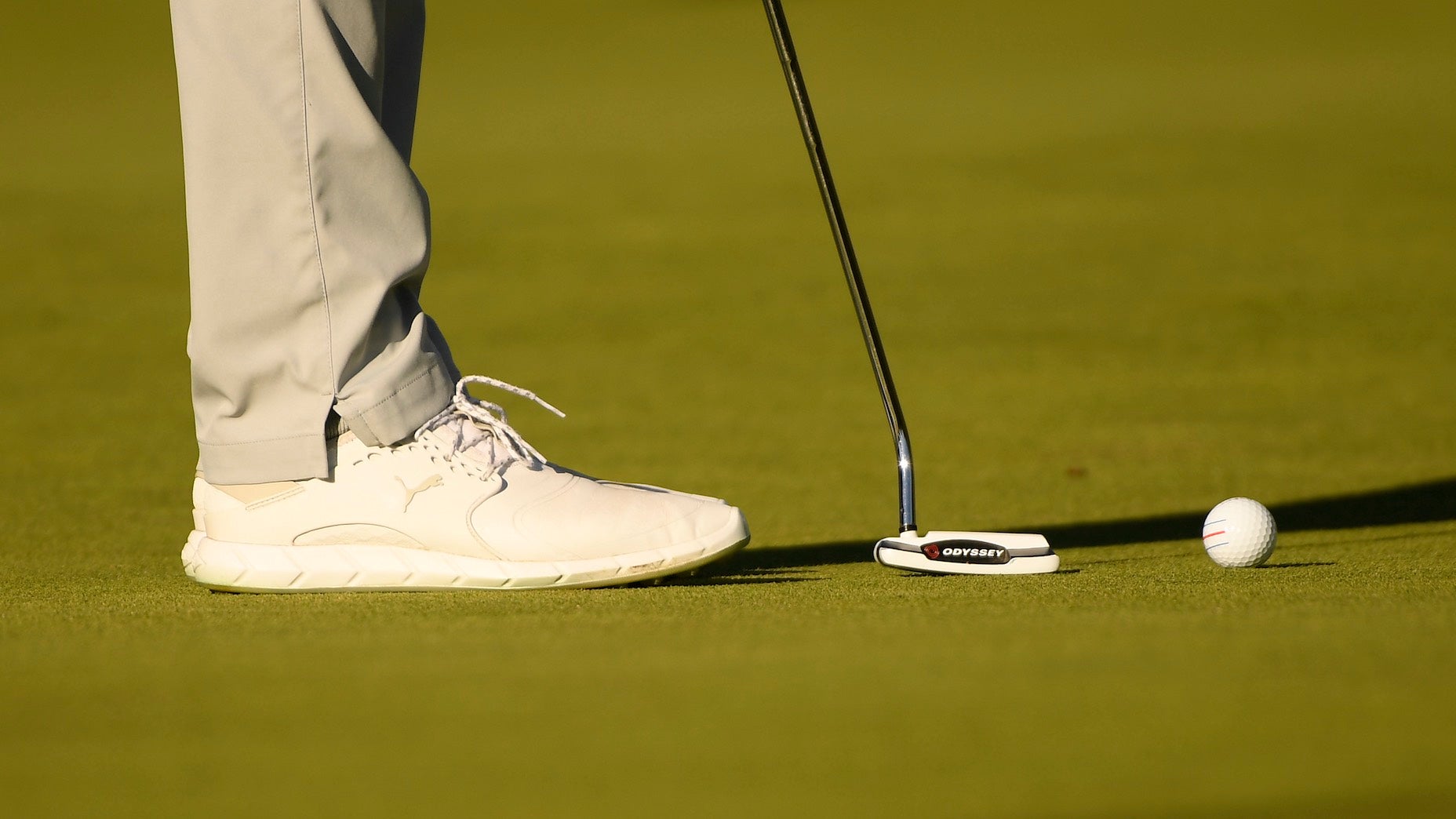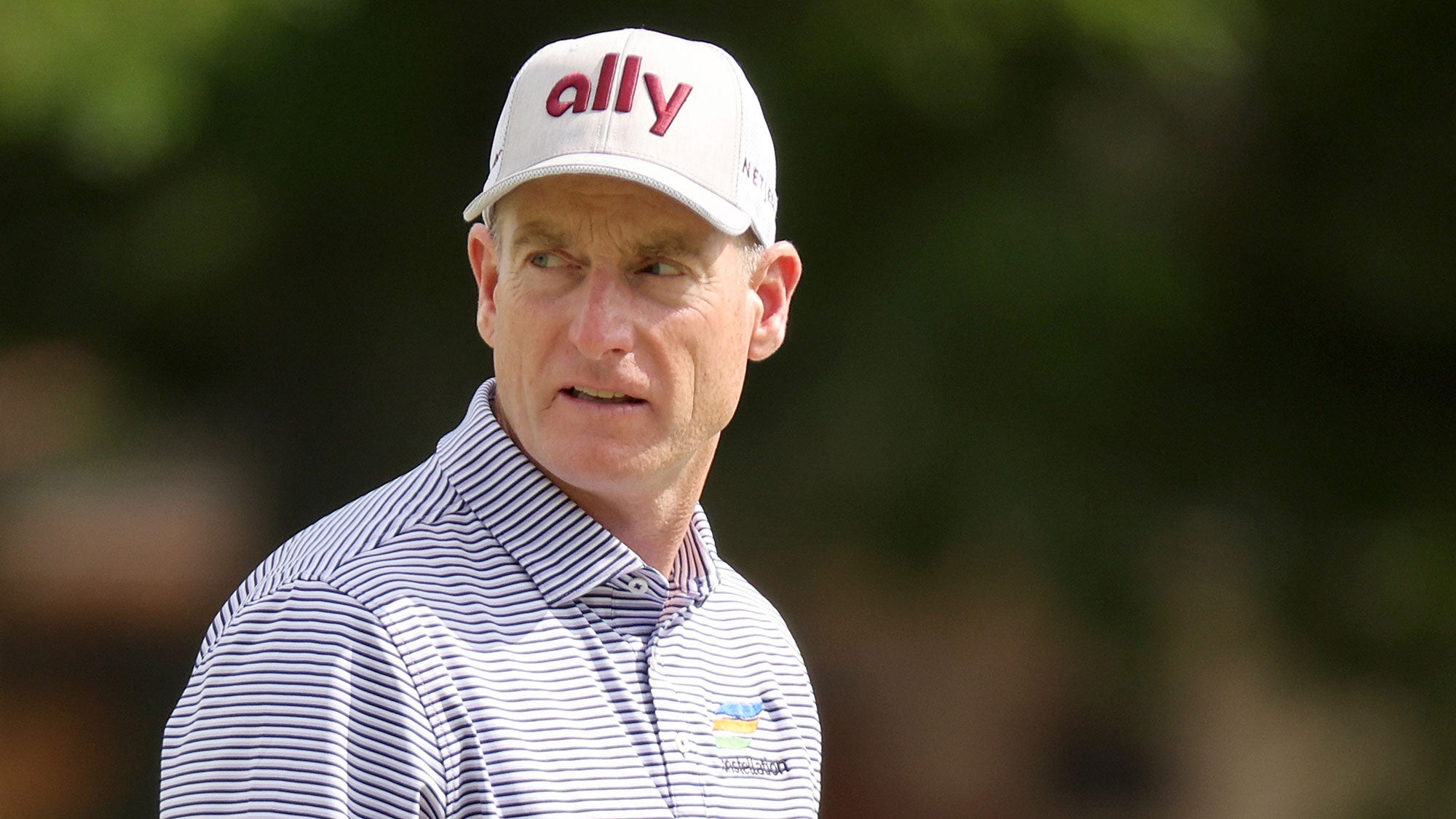As Father Time creeps closer, you can still fight back. Just ask Jim Furyk
- Share on Facebook
- Share on Twitter
- Share by Email
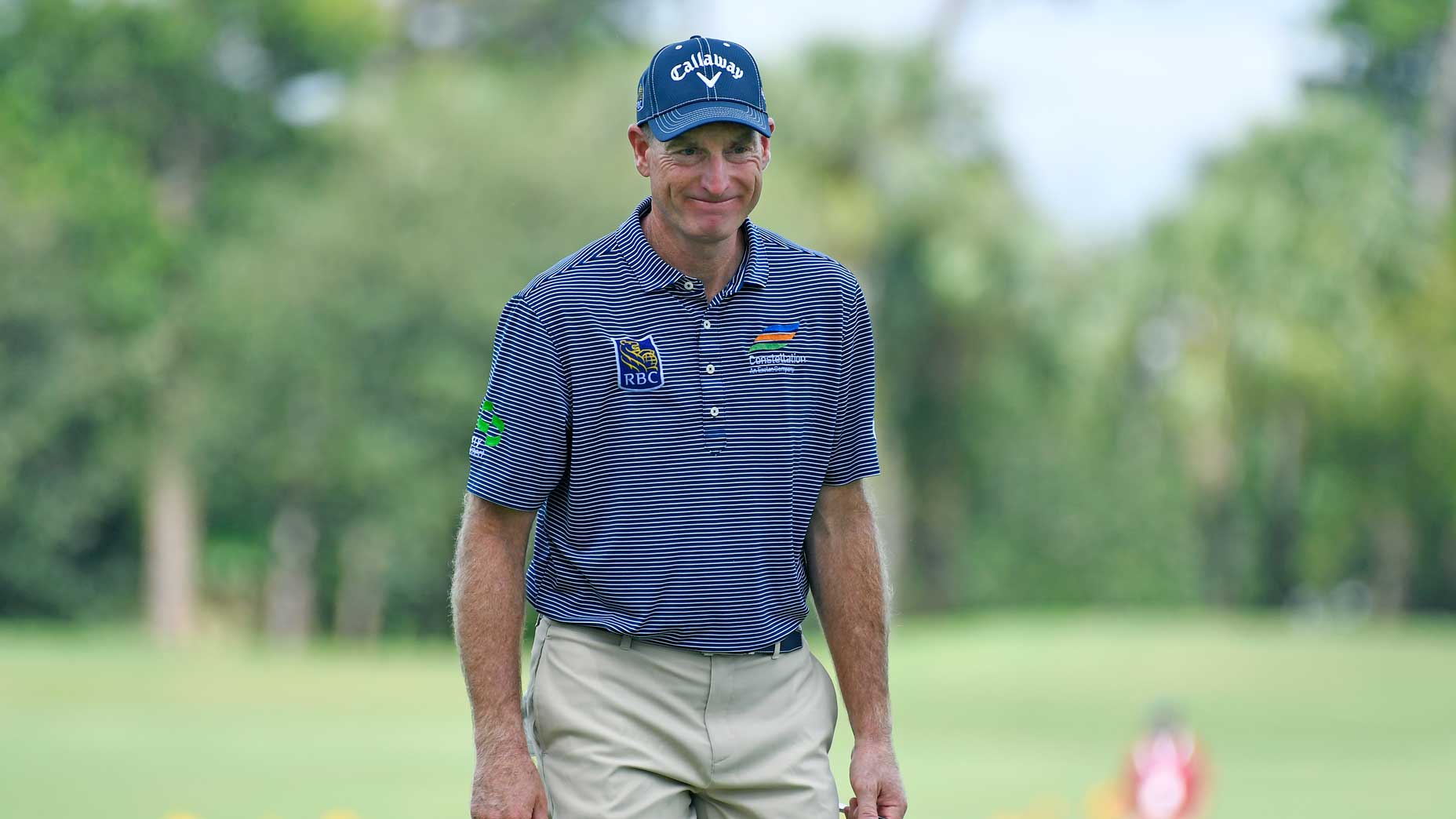
Furyk will continue to pick his spots on the PGA Tour. Just don't be surprised if he turns one of them into something special.
Getty Images
Jim Furyk wants you to know one thing right now: he is not bitter. Disappointed? Sure. But bitter? Hell no.
“Bitter looks ugly, man,” Furyk said over the phone last week. We were discussing the 2020 season, golf at large and his place within it all. He was keen to point out that, yes, while he is 50-going-on-51, he’s not miffed about the various forces trying to age him out of Tour relevancy. It may have been 25 years ago, but he remembers once being a young guy on Tour making the older generation think twice about their job security.
By various measures, Furyk didn’t have a good season on the PGA Tour, and that’s why he’s disappointed right now. He played 13 events, missed the cut seven times, recorded zero top-15 finishes and failed to qualify for the FedEx Cup Playoffs. And yet, he somehow led the Tour in fairways-hit percentage and greens-in-regulation percentage. Huh?
Shared first by GolfTV, that’ll go down as one of the funkier statistics you can find. Henrik Stenson is the only other player in the last 35 years to finish first in both categories, doing so in 2018, and his stat line was much more impressive: one 2nd-place finish, five top 10s, qualifying for multiple playoff events, and earning $2.68 million.
Time to up your T-Shirt game
It doesn’t take a golf genius to understand how hitting fairways and greens only gets you so far in pro golf, but it feels particularly bleak if the leader in greens in regulation doesn’t nab a top finish here or there. After all, it has been consistently proven (evidence here, here and here) that the biggest money earners on Tour earn most of their advantage approaching the green. (That is its own little package to unfurl, but it plays out that way every season.) Hitting greens, unsurprisingly, goes a long way. So, how could one of the best ball-strikers on Tour have a great ball-striking season, and get almost nothing out of it? The answer is more of an exploration of what happens when Father Time closes in the boundaries around you. Some of it is Furyk’s own doing, other parts seem out of his control, and he’s well aware of all of it.
It begins with analyzing the statistics we pay attention to. Furyk doesn’t care much about fairways hit, and frankly, to understand modern pro golf, nor should you. “I should hit a lot of fairways,” Furyk says, given his length. His distance has hovered around 278 yards off the tee since 2000, while the Tour average has increasingly distanced itself.
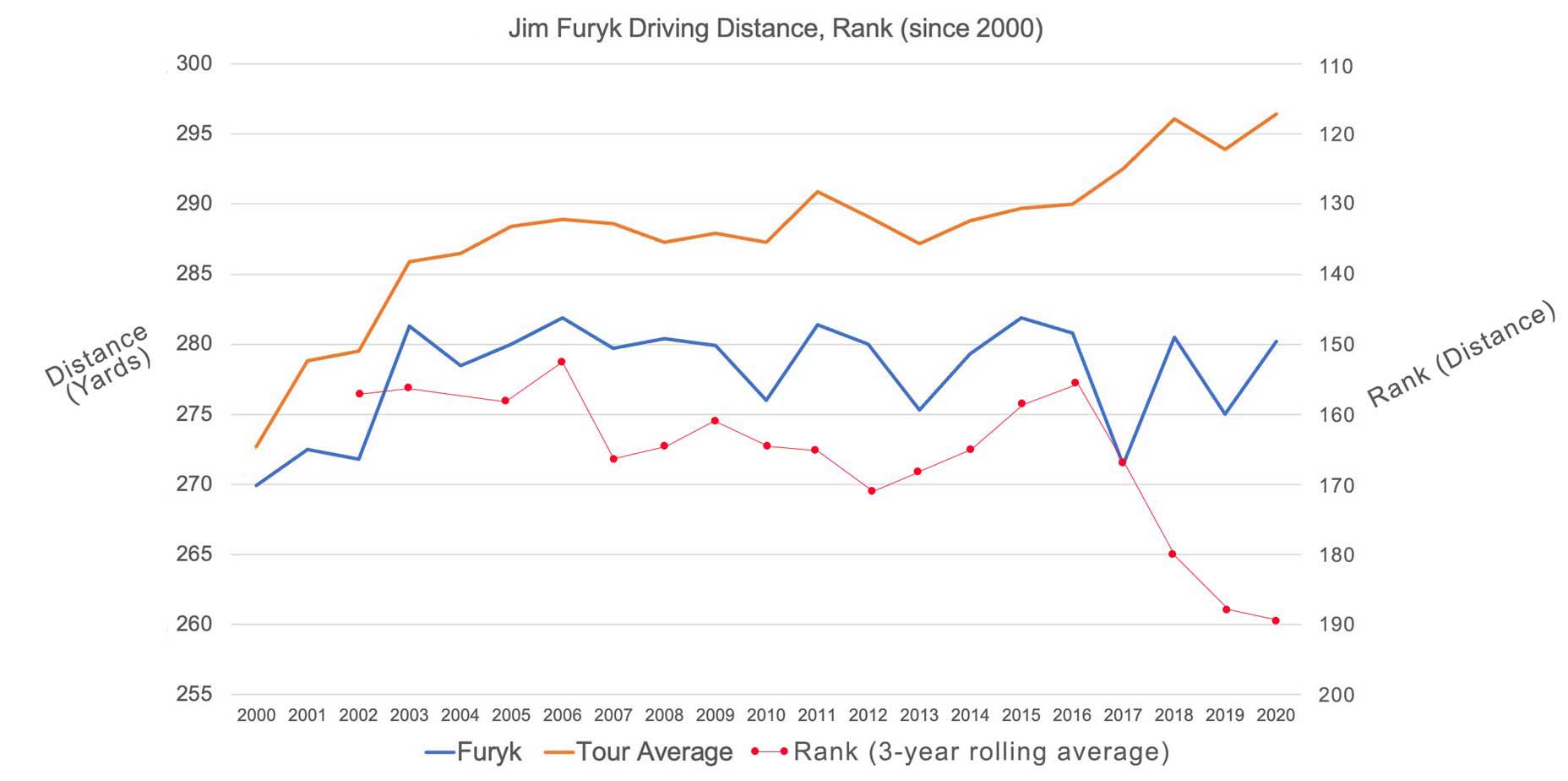
That Tour average in driving distance has been a focal point of Furyk’s career. He didn’t need to eclipse that average, so long as he stayed somewhat close. The rest of his game would make up for it. But those days of being close are in the past. If the very many Bryson DeChambeau headlines can teach us anything, it’s that the longest on Tour are trying to get longer, many others are following suit, and fairways are nice but not necessary.
On the greens, Furyk has spent his career fluctuating between a good and great putter, but he called his 2020 putting “extremely average at best,” and he wasn’t wrong. He ranked 116th in Strokes Gained: Putting, just a hair below the Tour average. But he was, statistically speaking, better than 77 other Tour pros last year. How else do you explain it?
Perhaps it was the lack of “streaky weeks,” to use his terminology, where the putter pushes you into the top 10. Perhaps there was some bad luck involved. His game felt good when he arrived at TPC Sawgrass in March, only to be met with a 13-week layoff. Really, the answer is a layered conclusion, and Furyk provided a mini lecture in how the modern game can be a bit suffocating.
There’s course setup, which often does him no favors. The rough, by his estimate, is shorter and less penal while pin placement has creeped closer to the edge. “If I looked at my pin sheets from the 90s, you’d see a lot of five, six and seven [paces from the] edges,” Furyk said. “And I think now you’re seeing a lot of four, five and six [paces].”
Will he go back to Muirfield in 2021, where he met his wife, where he’s won before and made the cut this year? Probably not. “I love the place, but I have to be honest — it’s an aerial attack,” he says. “I’m giving up too much yardage to play it in the air like I need to anymore.”
The soft fairways and easier pin locations of the Champions Tour beckon, too. Furyk took his elite ball-striking to the senior circuit, won his first two starts, and in just five events had tripled his PGA Tour earnings on the season. No one would fault him for moving on in that direction full-time. He’s just not quite ready for it, and he used one of his career earnings exemptions to maintain full status on the PGA Tour in 2021.
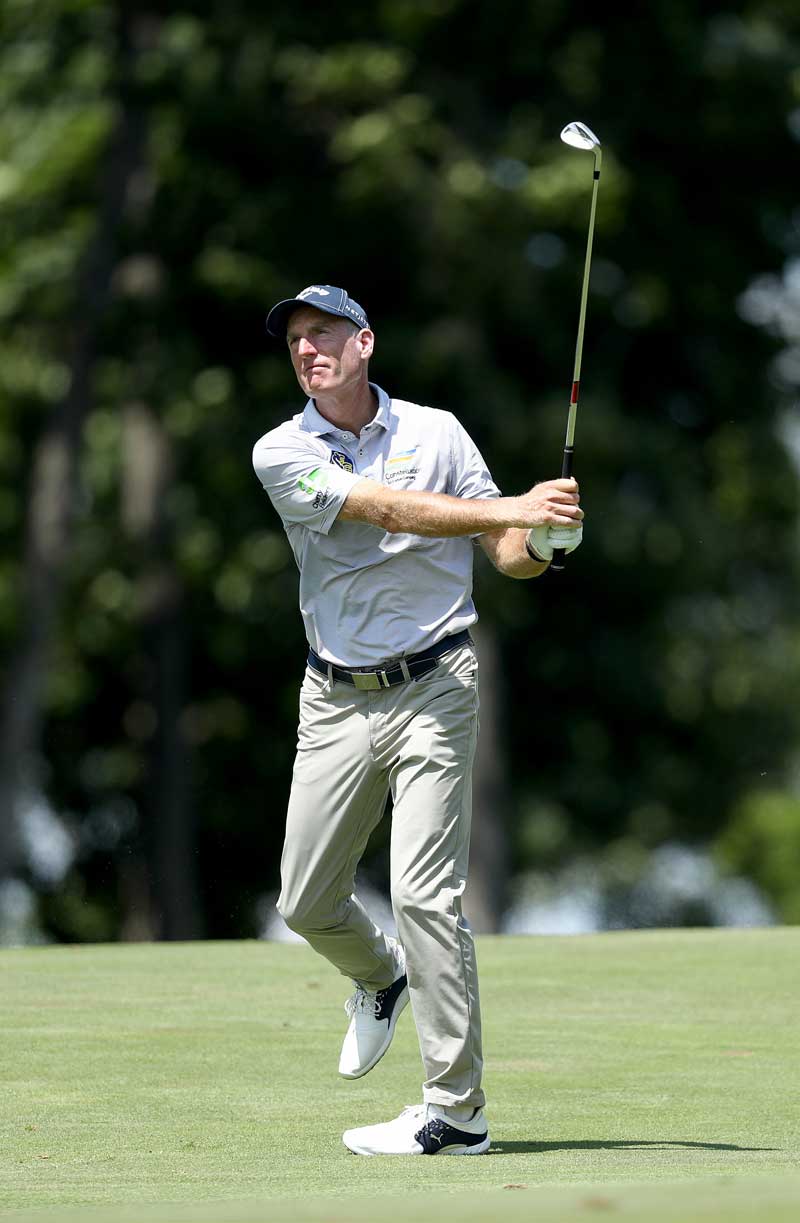
“I remember having this conversation back in — well, I wasn’t winning in ’07, ’08, ’09. I was playing solid, but I wasn’t winning,” Furyk said. “I had a guy interview me at the Tour Championship and he asked me, ‘All these young players are coming out. They’re hitting it farther. Are you afraid the game is going to pass you by?’ And I said, ‘Well, someday it’s going to pass me by, but it’s not gon’ be tomorrow. Nothing to worry about right now.’
“I had my best year ever and I was Player of the Year the very next year. The same guy walked up to me afterwards and said, ‘Hey, you’re right. It wasn’t tomorrow.’ And I said, ‘Hey, it’s going to happen someday. It happens to everyone in the world. You’ve gotta prolong that as far as you can.’”
The recipe, of course, sounds simple: choose the right events, maintain an elite level of ball-striking, turn the putter into an asset again and keep the short game tidy. It’ll involve plenty of time on the Champions Tour, but there is proof of the old guard making a stand on “the regular tour,” as Furyk put it: Ray Floyd, Kenny Perry and Fred Funk all did it. Stewart Cink won in September at 47. Brian Gay won in November at 48.
“He doesn’t hit it any farther than I do, or as far to be honest with you,” Furyk said. “I still think I can compete at certain courses, it’s just the number of golf courses I have the opportunity to win on is significantly lower than it used to be. That’s just a fact.”
All of it — his mindset, the funky stat, the tough-luck Covid break, the tougher pins and the longer courses — make Furyk a fascinating character to watch in 2021. The rest of the golf world will fawn over Will Zalatoris, Matthew Wolff, Collin Morikawa and whoever joins the young guns next year, and to some point rightfully so. Furyk will quietly continue putting clubface on the ball as well as anyone in the world, and it just might be good enough to get it done.
Latest In News

Sean Zak
Golf.com Editor
Sean Zak is a writer at GOLF Magazine and just published his first book, which follows his travels in Scotland during the most pivotal summer in the game’s history.





